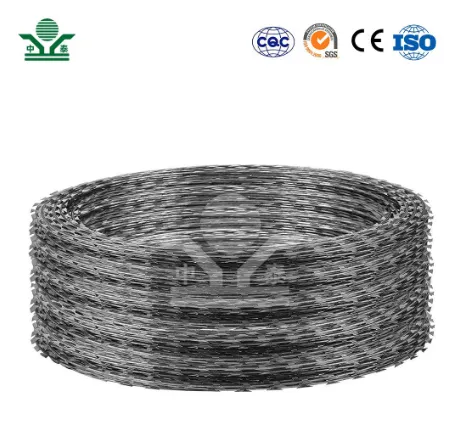Understanding Dutch Weave Mesh Size
Dutch weave mesh, a specialized type of woven wire mesh, plays an important role in various industrial applications due to its unique structure and properties. Characterized by its tight weave and precision, this type of mesh is particularly favored in filtration processes, offering advantages in terms of strength, durability, and efficiency. One critical aspect of Dutch weave mesh is its size, which significantly influences its performance and suitability for different applications.
What is Dutch Weave Mesh?
Dutch weave mesh is created using an intricate weaving technique that combines two different wire diameters a coarse wire for the warp (vertical direction) and a finer wire for the weft (horizontal direction). This combination results in a dense fabric-like material with very fine openings. The process allows for a tight fit between the wires, minimizing the size of the mesh openings. Consequently, this leads to enhanced filtration capabilities as it can trap smaller particles that other mesh types may not retain.
Importance of Mesh Size
The size of the Dutch weave mesh is crucial in determining its application. Mesh size refers to the number of openings per linear inch, which is typically denoted by the term mesh count. For instance, a mesh count of 200 means that there are 200 openings per inch, which leads to a smaller opening size compared to a mesh with a lower count. The size of the openings is vital for applications such as filtration, where the goal is to separate particles from liquids or gases effectively.
dutch weave mesh size

Larger mesh sizes (lower mesh counts) allow for the flow of larger particles but may not be suitable for applications requiring finer filtration. Conversely, smaller mesh sizes (higher mesh counts) can trap smaller particles but may restrict the flow of fluids. Therefore, selecting the appropriate mesh size is essential to achieving the desired balance between filtration efficiency and flow rate.
Applications of Dutch Weave Mesh
Dutch weave mesh is widely utilized in various industries, thanks to its unique properties and versatility. In the food and beverage industry, for instance, it is used for processing liquids, filtering out impurities, and ensuring product safety. In the chemical and petrochemical sectors, Dutch weave mesh serves as an essential component in the separation of solids from liquids, ensuring that the end products remain free from contaminants.
Moreover, it finds applications in pharmaceuticals, where precise filtration is crucial for maintaining the purity of medications and vaccines. The mesh's durability also makes it suitable for use in harsh environments, such as water treatment plants and mining operations, where it can withstand high pressures and aggressive chemicals.
Conclusion
In summary, Dutch weave mesh is a vital material in industrial filtration and separation processes, with its mesh size being a key factor that affects its performance. Understanding the intricacies of mesh sizing allows industries to select the right type of Dutch weave mesh for their specific needs, optimizing filtration efficiency while minimizing the risk of clogging or damage. As industries continue to evolve and demand more effective filtration solutions, the importance of Dutch weave mesh, particularly its size, is increasingly recognized. Companies looking to enhance their processes would benefit from a deeper understanding and application of this specialized mesh technology.
-
The Best Metal Mesh Solutions: Expanded Aluminum Metal vs. Expanded Stainless Steel Metal
NewsSep.10,2024
-
Round Perforated Sheets vs. Hexagonal Perforated Sheets vs. Embossed Perforated Sheet Metal
NewsSep.10,2024
-
Perforated Metal Sheets
NewsSep.10,2024
-
Experience The Excellence Of Stainless Steel Grating
NewsSep.10,2024
-
Discover the Versatility Of Metal Mesh Expanded Forming Machines
NewsSep.10,2024
-
Discover The Advantages Of Steel Grating For Sale
NewsSep.10,2024
Subscribe now!
Stay up to date with the latest on Fry Steeland industry news.

